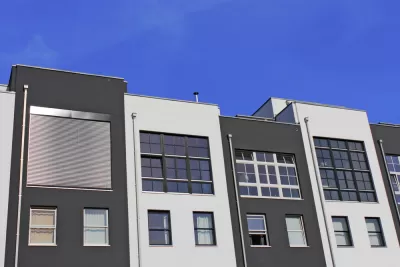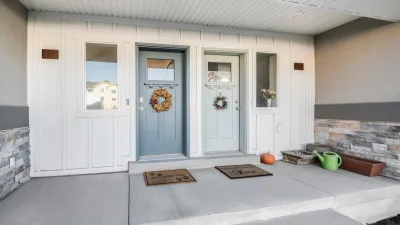A long-standing tradition of opposing multifamily housing construction continues to hamper housing production even as demand for affordable options grows.

Pointing to a recent example from Shawnee, Kansas, which recently banned “co-living”—as defined by four or more unrelated adults living together—in response to the growth of companies that convert single-family homes into multi-tenant rentals, Danielle McLean comments that “Municipal zoning regulations that restrict the number of unrelated adults living in a single unit are common across the U.S.” This poses a problem, McLean writes, as the housing market grows increasingly unaffordable.
While cities defend these restrictive regulations as a way to prevent “corporate landlords buying up housing and turning it into unaffordable rentals,” housing experts criticize them “for blocking the development of housing, particularly new affordable housing options.”
New development often faces opposition from multiple fronts: while some homeowners worry about property values and neighborhood character, housing advocates express concerns about gentrification and displacement. McLean describes the “time-honored tradition” of opposition to multifamily housing, which often strangles housing production and exacerbates the affordability crisis, as well as recent efforts by states such as Massachusetts and California to fight this “aversion to change” by mandating less restrictive zoning and land use policies.
Meanwhile, experts repeatedly remind policymakers that to have a significant impact on housing production, eliminating single-family zoning restrictions is just “part of a broader suite of changes that eliminate other restrictions such as setback and building height requirements and parking limits.”
FULL STORY: The ‘time-honored tradition’ of opposing affordable multifamily housing in US cities

Alabama: Trump Terminates Settlements for Black Communities Harmed By Raw Sewage
Trump deemed the landmark civil rights agreement “illegal DEI and environmental justice policy.”

Planetizen Federal Action Tracker
A weekly monitor of how Trump’s orders and actions are impacting planners and planning in America.

Why Should We Subsidize Public Transportation?
Many public transit agencies face financial stress due to rising costs, declining fare revenue, and declining subsidies. Transit advocates must provide a strong business case for increasing public transit funding.

Understanding Road Diets
An explainer from Momentum highlights the advantages of reducing vehicle lanes in favor of more bike, transit, and pedestrian infrastructure.

New California Law Regulates Warehouse Pollution
A new law tightens building and emissions regulations for large distribution warehouses to mitigate air pollution and traffic in surrounding communities.

Phoenix Announces Opening Date for Light Rail Extension
The South Central extension will connect South Phoenix to downtown and other major hubs starting on June 7.
Urban Design for Planners 1: Software Tools
This six-course series explores essential urban design concepts using open source software and equips planners with the tools they need to participate fully in the urban design process.
Planning for Universal Design
Learn the tools for implementing Universal Design in planning regulations.
Caltrans
Smith Gee Studio
Institute for Housing and Urban Development Studies (IHS)
City of Grandview
Harvard GSD Executive Education
Toledo-Lucas County Plan Commissions
Salt Lake City
NYU Wagner Graduate School of Public Service





























